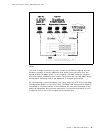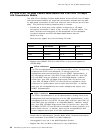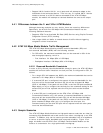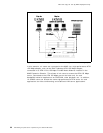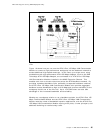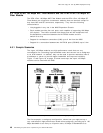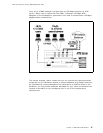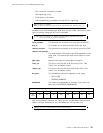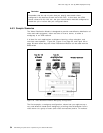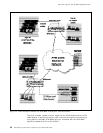This soft copy for use by IBM employees only.
quality, low bandwidth, and low resolution standard with fixed limited rates.
MPEG-2 expands upon MPEG-1 in all directions:
•
Higher quality (at the expense of higher bandwidth requirements)
•
Higher resolutions (up to HDTV levels)
•
Tremendous flexibility in compression rates.
MPEG-2 provides the standard for high-quality motion video compression. It is
accepted by all segments of the entertainment, broadcasting, and video editing
industry.
4.6.1.1 MPEG-2 Data Streams
MPEG-2 allows for the multiplexing of many independent audio and video
streams (called
Elementary Streams
) into a
System Stream
, with synchronization
information and audio/video correlation information.
There are two types of system stream:
1. Program data stream
This is suitable in environments where reliable storage is ensured.
2. Transport data stream
This is designed to transmit audiovisual content over networks.
The MPEG-2 transport data stream carries video and audio in the same data
stream within separate fields. All video and audio material is stamped with
presentation time stamps at the time of encoding. These time stamps are
synchronized during the decoding process. This ensures synchronization of
data without perceivable jitter.
4.6.1.2 Multiplexing and Synchronization
MPEG-2 defines a
system layer
that provides the ability to multiplex and
synchronize multiple video and audio streams, and other private data. The
system layer includes clocking information between the encoder and decoder.
Even when an MPEG-2 stream is stored, the decoder may read the clock values
to accurately recreate the motion picture.
The system layer also removes storage and transmission dependencies from
MPEG-2. Since the system layer is self-clocking, MPEG-2 does not require
synchronized transmission lines. Error checking fields add robustness to the
transmission layer.
In comparison, there is no standardized system layer for M-JPEG. Therefore, it
must record and transmit video and audio separately. The lack of a standard
prevents M-JPEG encoded material from being freely exchanged. It cannot be
recorded for future playback due to the absence of built-in timing information.
M-JPEG requires a synchronous transmission line, that is, a more expensive
communications network.
Chapter 4. IBM 8285 ATM Modules 49



